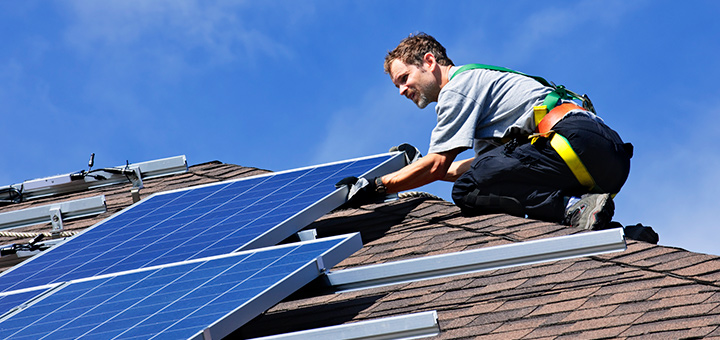Things You Need to Know Before Installing Rooftop Solar Power System
A rooftop solar power system, or rooftop PV power system, is a photovoltaic (PV) system that has its electricity-generating solar panels mounted on the rooftop of a residential or commercial building or structure. The main components of such a system include photovoltaic modules, mounting systems, cables, solar inverters and other electrical accessories.
Compared with ground-mounted photovoltaic power stations with capacities in the megawatt range, rooftop mounted systems are small. Generally speaking, rooftop solar power systems on residential buildings feature a capacity of about 5 to 20 kilowatts (kW), while those mounted on commercial buildings often reach 100 kilowatts or more.
Advances in wind and solar power over the years has seen major improvements to off grid power technology. It’s now cheaper and more efficient than ever; so just because you’re living in a remote region, doesn’t mean you need to sacrifice some benefits.

How Does Rooftop Solar Power System Work?
Rooftop solar panels rely on the ability of the solar cells to harness the energy of the sun and convert it into electricity. It is a small, square-shaped semiconductor that is made from conductive materials such as silicon. When sunlight strikes the solar cells, it induces chemical reactions that release the electrons, thus generating electric current.
Feasibility of Rooftops for Generating Power
For home rooftop solar power systems, the nature of the roof is very important to determine its feasibility. The factors that need to be taken into consideration are as follows:
The availability of sunlight throughout the year and the area available on the rooftop is important to calculate the power that can be generated. A typical home solar panel can produce about 300 watts by harnessing one hour of direct sunlight. If sunlight falls for 8 hours then the solar panel can produce 2400 watts electricity.
The orientation of the rooftop towards the sun is important. Exposure towards the south is the ideal orientation for the panels. If the roof is naturally sloping and facing south, then it is very ideal for installing rooftop solar panels. When your house is situated in the northern hemisphere, south facing rooftops will receive the maximum amount of sunlight. However, if the roof is flat, solar panels will need to be placed at an angle facing south to receive the maximum sunlight. Further, high rise buildings should not hinder the exposure of the solar panels to sunlight.
The decision on choosing a suitable type of rooftop solar system impacts the cost of the system. Each type involves different components and the costs could vary depending on them.
There are two major types of rooftop solar power systems.
Grid-connected Solar Power Systems
Grid-connected solar power systems are connected to the public electricity grid via a suitable inverter because a PV module delivers only dc power. Normally there are almost no effects of the PV systems on the grid affecting power quality, load-on lines and transformers, etc. However, for a larger share of PV in low- voltage grids, as in solar settlements, these aspects need to be taken into consideration. From a technical point of view, there will be no difficulty in integrating as much PV into low- voltage grids as the peak load of the respective segment decentralized grid-connected PV systems, central grid-connected PV systems. Decentralized grid-connected PV systems have mostly a small power range and are installed on the roof of buildings (flat-roof installation) or integrated into building facades. Central grid-connected PV systems have an installed power up to the MW range. With such central solar power stations, it is possible to feed directly into the medium or high voltage grid.
Stand-alone Rooftop Solar Power Systems
Stand-alone rooftop solar power systems do not have a connection to an electricity grid. They can have capacity ranging from million watts to several kilowatts. The main components of this system are: solar modules, charge controller, battery and inverter. The solar modules are mounted on a mount structure and the DC power they produce is channeled through a charge controller to charge the battery where it is stored. The two main functions of a charge controller are to prevent the battery from being overcharged and eliminate any reverse current flow from the batteries back to the solar modules at night. The battery bank stores the energy produced by the solar array during the day for use at anytime of the day or night. The inverter takes the DC energy stored in the battery bank and inverts it to 120 or 240V AC to run your AC appliances.
Conclusion
Know some basic knowledge about rooftop solar power systems do help us to choose the system type and install the plant. Suitable choice will help you save cost and even make money.



































































































